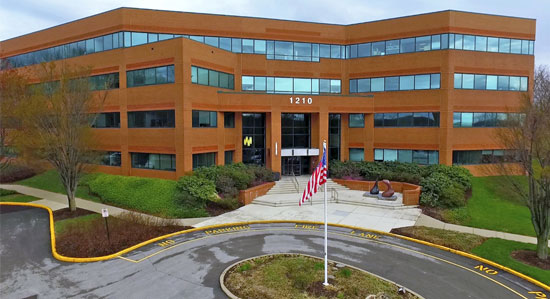Deer Accident Lawyer: Injured in a Wildlife Collision?

Between July 2020 and June 2021, 2.1 million animal-related vehicle accidents occurred, and 1.3 million of these accidents involved deer. In Pennsylvania alone, PennDOT reported more than 5,800 deer-related crashes in 2022.
Though State Farm data says the current chances of hitting a deer in Pennsylvania are 1 in 54, these chances increase during the fall, which is deer’s migrating and mating season.
While deer-related accidents can happen all year round, it is vital to be more alert and aware of your surroundings when deer are most active — October through December. Protect yourself and prevent deer-related accidents from occurring by taking extra safety precautions.
How to Avoid Hitting Deer While Driving:
1. Know their typical behaviors.
Deer are crepuscular animals meaning they are most active at dawn and dusk. The highest chances of being involved in a deer-related accident occur between 6 p.m. and 9 p.m. If you must travel during these hours, turn your headlights on and continuously scan the road ahead. If there is no oncoming traffic, turn on your high beams to make it easier to detect deer.
You should also be aware that deer are herding animals and very rarely travel solo. When you see a deer cross the road in the distance, reduce your speed and proceed with caution because more may follow. If you must stop for a large group to cross, turn on your hazard lights to warn other drivers.
2. Take Your Foot Off The Pedal Before Striking The Deer
Although it can be difficult, resist the urge to swerve around the deer. Trying to avoid hitting the deer can lead to a more severe accident. You could collide with a car going in the same direction as you or, worse, with a car going in the opposite direction. Swerving can also confuse the deer on where to run. If you stay in your lane and honk your horn, the deer has a better chance of getting out of the way.
3. Take Your Foot Off The Pedal Before Striking The Deer
If striking the deer is your only option, braking hard to slow down can result in less damage and injuries. However, you should remove your foot from the brake pedal before striking the deer. When you brake hard, the front of your car tips down and can cause the deer to roll on top and come through the windshield.
4. Drive In The Left Lane
Stay in the left lane if you’re driving on a road with multiple lanes. If you are driving in the lane closest to the shoulder and a deer jumps out, you will have less time to react and a higher chance of striking the deer. If you travel in the left lane, you will have more time to see the deer, brake, and avoid hitting the deer.
5. Wear A Seatbelt
Deer are unpredictable and could pop out of nowhere and catch you off guard. Always wear your seatbelt to reduce the severity of potential injuries or even death. If you have passengers in your car, remind them to buckle up too.
What You Should Do if You Hit a Deer While Driving
The aftermath of any accident can be a scary and stressful time. Still, your top priority is to ensure the safety of yourself, other people involved, and members in other vehicles traveling by. Follow these five steps to help guide you through the situation correctly and safely.
- Step 1: Assess the safety and well-being of yourself and others involved in the accident. If anyone is severely injured, immediately seek emergency medical attention.
- Step 2: If your car is not damaged and okay to move, relocate it to a safer spot out of traffic.
- Step 3: Call 911 to report the accident. Inform officials of your location, the statuses of the individuals involved, and whether the deer is still on the road.
- Step 4: Check your vehicle and document the accident. Take photos and videos of any damage to your car, injuries you or someone else might have, and tire skid marks your vehicle left on the road.
- Step 5: Contact your insurance provider to discuss how much coverage you’ll receive, the claim process, and your deductible amount.
You should not approach the deer during any of these steps. If the deer is still alive, it is most likely confused and hurt, which can cause it to become more defensive and dangerous. Authorities will take care of the animal when they arrive. See our list of driving tips for the fall.
Hire a PA Car Accident Attorney for Deer-Related Accidents
With deer accidents being so common in Pennsylvania, you must know what to do if you’re in an accident and what you can do to prevent one from happening in the first place. If you or a loved one was hit by a negligent driver that swerved to avoid contact with a deer, contact the car accident lawyers at Flager & Associates today by calling (215) 953-5200. We provide free case evaluations.

Written by Adam D. Flager, Esq., Associate at Flager & Associates, PC
With his practice focused on litigation, Adam primarily represents clients in personal injury cases, such as motor vehicle, slip and fall, defective products, and construction and worksite accidents. He is licensed to practice in the Commonwealth of Pennsylvania, the State of New Jersey, the Eastern District of Pennsylvania, the District of New Jersey, and the United States Court of Appeals, 3rd Circuit. Adam received his J.D. from Widener University School of Law in 2009, where he graduated with pro-Bono Distinction.

